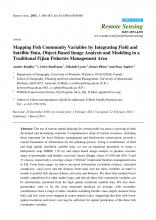Do large whales have an impact on commercial fishing in the South Pacific Ocean
Although there is evidence that some populations of large whales in the Southern Hemisphere have increased in recent years, differences in feeding behaviour and migration patterns largely precludes direct competition between these and coastal pelagic fisheries in the South Pacific Ocean. In particular, many of the whales that spend at least part of their year in the South Pacific make feeding migrations in summer to Antarctic waters where some estimates put their food intake at 90% of annual consumption. Others, such as female sperm whales (Physeter macrocephalus), which do not migrate from tropical/subtropical South Pacific waters, feed at depths greater than that usually occupied by species that are the targets of commercial fisheries, such as the tunas (Thunnus spp.). Thus, even though consumption by whales is high, dietary overlap with commercially fished species is relatively low as much of their feeding is in waters that are not exploited by fisheries. However, there are a number of anecdotal reports that some smaller cetacean species, in particular killer and pilot whales, that take fish from longlines set in the region, although more are lost to sharks. However, it should be noted that any assessment of interactions between whales and fisheries is limited by a lack of qualitative and quantitative data. Abundance estimates, particularly for some of the smaller species in the South Pacific region, are only order of magnitude estimates. Furthermore, knowledge for food chains (and their interactions) for many cetaceans in the South Pacific is sketchy making assessment of their impact on local fisheries difficult.







